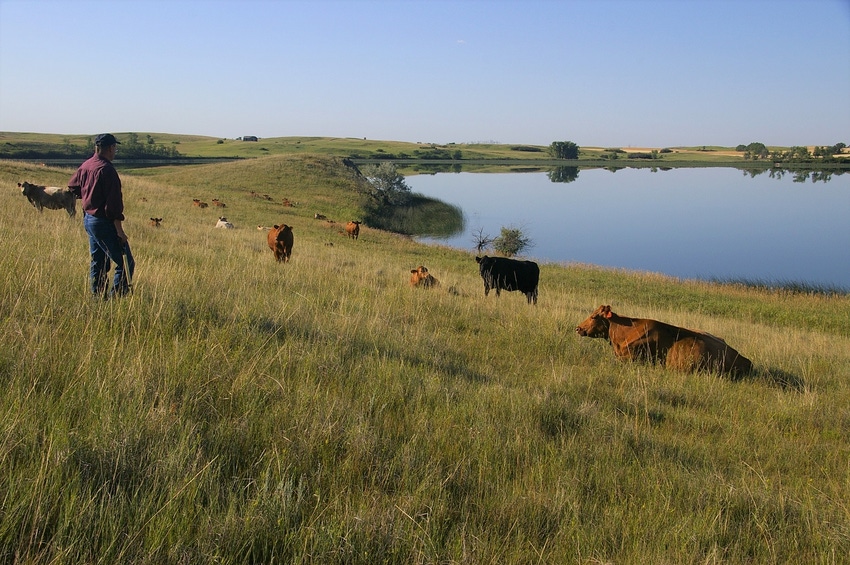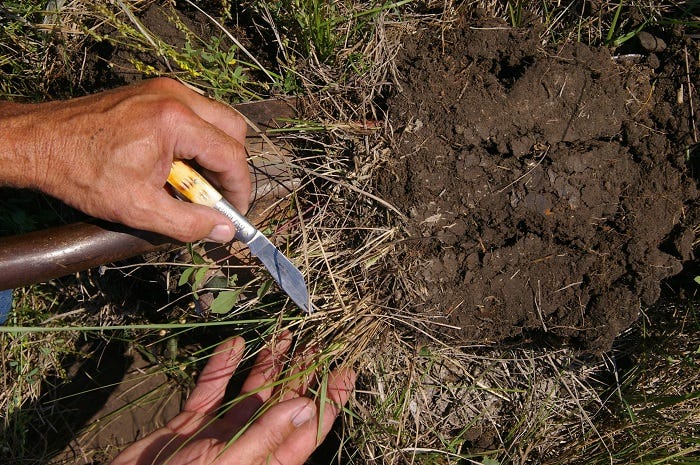September 15, 2020

It’s been a very productive 40 years since Gene Goven first implemented cross-fencing and managed grazing on the native prairie that comprises about 50% of his North Dakota ranch.
It took six years to see the first tangible results of his efforts, then he watched his forage productivity increase by a whopping 430%. That meant he could increase his grazing from 55 cow-calf pairs to 150 to 170 pairs.
“I’d never go back to all-season grazing,” Goven says. “Over the years, I’ve divided my first permanent paddocks with temporary fencing whenever conditions allow. I’ve seen how much soil health has improved, which means forage quantity and quality gets better, too. My motto has become ‘manage diversity for soil health enhancement.’”
Goven can’t say exactly why, in the beginning, he felt compelled to install cross fences so he could rotate his herd from one area to another. One memory he carries is an illustration that likens cattle to people at a salad bar.
“A public lake shore runs along some of our pastures,” Goven says. “I knew my cattle were grazing along that shoreline, moving away from it a few days, then going right back to the same area.”
Grazing the regrowth so quickly meant root systems in that area were being depleted and weakened while other areas of the pasture weren’t grazed at all.
“I realized that, just like me when I visit a salad bar, those cows wanted, tender, lush greens,” Goven says. “I knew I couldn’t allow them to continue grazing that way.”
Goven also notes that any type of livestock is a “tool for marketing forage.” Converting that forage to protein happens when livestock graze. Since forage quality and quantity is highly dependent on soil quality, Goven has also learned that his grazing strategy needs to include a means of building soil quality.
Forage has two uses
Part of Goven’s strategy includes harvesting 300% of the 430% increase in his forage. The portion left behind feeds soil microbes to help build soil organic matter (SOM). Hoof action in paddocks presses grasses into the soil so microbes can break them down. There are more microbes in a teaspoon of soil than there are people on earth, including bacteria, fungi, protozoa, nematodes, earthworms, and arthropods. Trampled grasses provide energy for growing microbes and help supply carbon for the formation of new cells.
Through urination, cattle deposit plant-available nitrogen while grazing a paddock.
“We leave more forage behind now than we used to graze,” Goven says. “Each year we stagger the enter dates for our paddocks. If we grazed an area July 1 last year, we won’t come in on that same date for another 10 years.”
To aid fly control, Goven moves cattle at least one quarter mile when going to a new paddock. That strategy means new fly larvae have no food source when they hatch, and cattle have greatly reduced parasite issues. Since implementing the practice, his paddocks have hosted dung beetles, which further reduces opportunity for flies to multiply.
“It took the beetles between five and seven years to show up after we stopped using pour-ons for parasite control,” Goven says. “We know that’s beneficial to our ecosystem because range managers know now that for every insect predator there are over 100 beneficial insects on grasslands. We weren’t just killing the bad ones with the chemicals. We killed them all.”
Topography dictates the size of some his paddocks, and some are as large as 70 acres. He readily makes use of temporary electric fencing to divide paddocks as weather and rainfall allow.
Water sources include potholes, some shallow water lines and use of tire tanks which are set up to provide water in at least four different paddocks.
Soil progress
Goven’s soil organic matter, tested in three zones at 0-10 inches, 10-25 inches and 25-40 inches shows great improvement, with at least 5.5% in the top 10 inches of his soil. Along with that, water infiltration is significantly increased. Before his use of cross fencing, infiltration rates ranged between .8 inches per hour and 1.2 inches per hour. His current infiltration rate averages 6 and 6.5 inches per hour.
“That’s our poorest infiltration rate,” Goven says. “Our best rate is over 10 inches per hour.”

Cattle health
On top of all the soil and forage benefits, Goven has also boosted herd health and pounds of beef produced per acre.
“The first six years I used cross fencing, I supplemented calves with a creep feeder,” Goven says. “After attending an Allan Savory holistic management workshop, I came home, sold the creep feeder, and boosted daily gains on calves by half-a-pound. Now I monitor herd performance primarily through pounds of beef per acre.”
Goven recommends that beef producers thoroughly evaluate their resources, identify ways to tweak those assets and give great attention to how to promote the health of their soils.
“It doesn’t happen quickly and there’s no shortcuts,” Goven says. “To start with, the biggest thing you have to achieve is a paradigm shift. Observe more in the paddocks, try different things. Continually tweak your system every year. When the light bulb comes on, you’ll see a lot of things you used to overlook.”
About the Author(s)
You May Also Like




